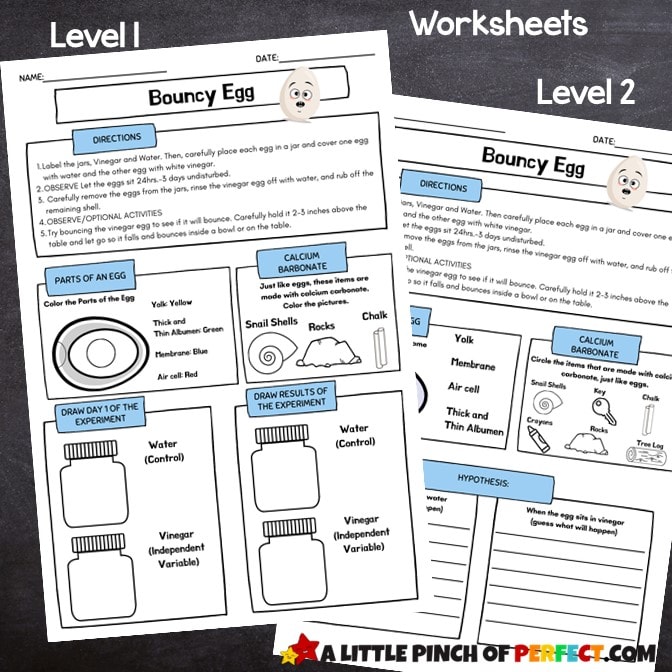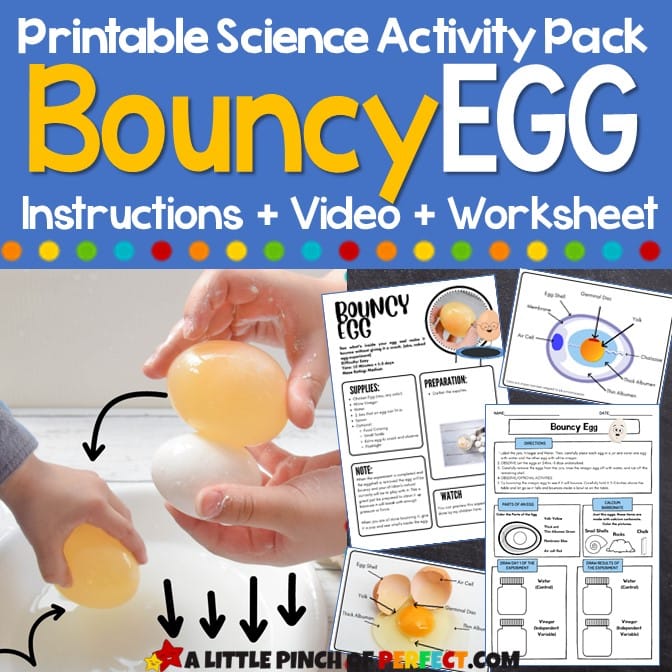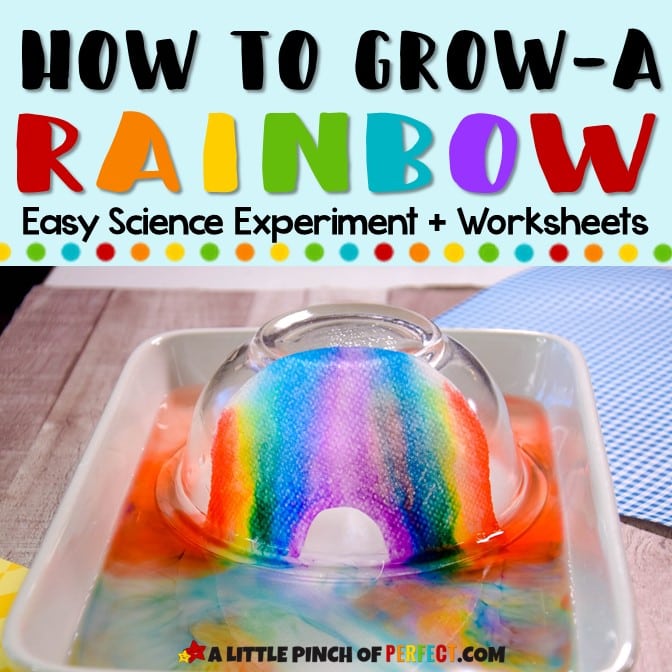Find out what’s inside an egg and how to make it bounce without cracking it. Follow the easy directions and print the bouncy egg experiment worksheets.
Thank you for visiting. This post may contain affiliate links to recommended products at no extra cost to you. Read our Disclosures and Terms of Use. Don't miss out again, become a Reader here <--it's FREE.
We can’t tell you if the chicken or egg came first, but we can tell you how to make an egg bounce (a.k.a. naked egg experiment). Just follow the step-by-step instructions to learn how to remove the eggshell of raw eggs, no boiling is required, so your kids can participate in all the steps to complete the experiment making it a wonderful hands-on-science-experiment!
Everything you need to do this fun science experiment can be found in your kitchen which is nice because you don’t have to run to the store (or Amazon) for any special supplies. It also helps increase the mystery of this science experiment for your children because they have all seen an egg crack…so wondering how to make an egg bounce comes naturally and curiosity leads to exploration!
See all our Science Activities Here like our Leaf Chromatography Experiment and How to Grow a Rainbow.
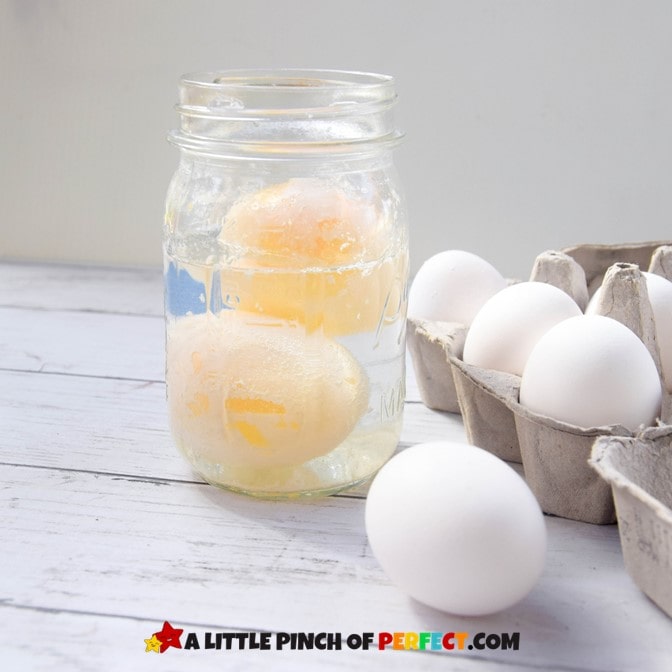
I LOVE science experiments so much because children LOVE doing them, and as they do them they learn firsthand about science concepts and the world around them. I want you to have a successful experiment so on top of giving you the directions and video tutorial, I have also created a science activity pack to make STEM activities in your home or classroom a cinch (See our other Science Packs Here).
The Bouncy Egg Science Pack includes:
- Read Aloud Narrative to introduce the activity (science pack exclusive)
- Supply List
- Directions
- Science Explanation
- Egg Experiment Worksheets (science pack exclusive)
- Parts of an Egg Diagram (science pack exclusive)
The worksheets add to the learning by guiding children to think like a scientist as they go through the scientific process and learn about eggs and chemical reactions. Everything is ready for you, so besides gathering the supplies, there is no prep for this simple experiment.

Now, let’s get started and make an egg bounce a.k.a. rubber egg experiment a.k.a. Naked Egg experiment (the latter being my kid’s favorite name to call it…they are so silly)!
TIP:
When the experiment is completed and the eggshell is removed the egg will be bouncy and your children’s natural curiosity will be to play with it. This is great just be prepared to clean it up because it will break with enough pressure or force. When you are all done bouncing it, give your rubber egg a pop and see what’s inside.

FAVORITE EGG BOOKS TO ADD MORE LEARNING AND FUN!
Click photos and links: Affiliate links to more information on these books and supplies we love!
(Purchases through affiliate links earn us a small commission with no extra cost to you. See our Disclosure Policy here.)
Bouncy Egg Experiment
If you like our Bouncy Egg Science Experiment I would love for you to PIN IT! It helps others discover it too, which helps us bring you more AWESOME CONTENT like this.

Supplies:
- 2 Chicken Eggs (raw, any color)
- White Vinegar
- Water
- 2 Jars that an egg can fit in
- Spoon
- Optional:
- Food Coloring
- Small Scale
- Extra egg to crack and observe
- Flashlight
Directions:
Watch our Video Tutorial to see how to do this experiment. The directions and learning worksheets can be purchased and downloaded.
- Optional:
- Decide which egg is going into the water and which egg is going in the vinegar.
- Weigh each egg and record the weight on your worksheet.
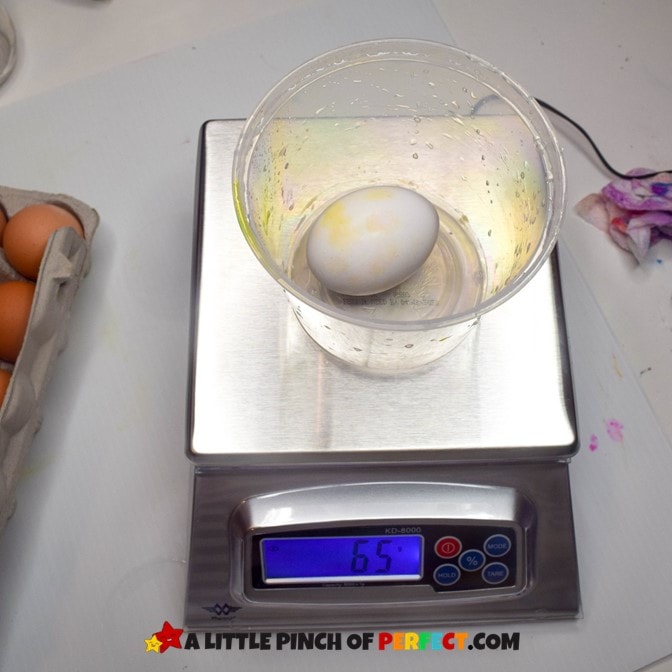
- Label the jars, Vinegar and Water.
- Carefully place each egg in a jar and cover one egg with water and the other egg with white vinegar. You can add food coloring to the jar, however, note that it may make it harder to observe the egg and the results. (Look below for the photo example of the egg with food coloring… It looks like the Easter Bunny dyed it)
- OBSERVE
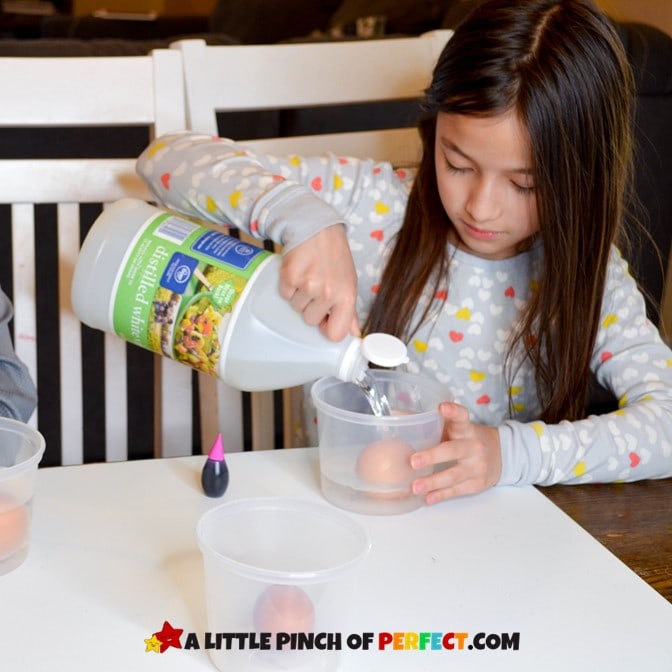
- Let the eggs sit 24hrs. undisturbed. Once the bubbles made of carbon dioxide gas, stop appearing on the vinegar egg and the shell is visibly changed, continue with the experiment. (It will look like chalk is on the outside of the egg). You can let your egg soak for 1-3 days. The longer the better.

Bouncy Egg Experiment Results
- Carefully remove the eggs from the jars and observe. The hard outer shell should be gone and you should be left with a translucent egg that’s covered with a thin membrane. Carefully rinse the vinegar egg off in the sink with tap water and rub off the remaining shell that looks like a layer of brown scum or white film.
- What differences do you see? How does your egg feel?
- Size, color, weight, feel
- Optional: Weigh the eggs and record the weight on your worksheet.
- Optional: Hold a flashlight to the eggs. Can you see through the egg’s membrane? Do you see the yolk?
- What differences do you see? How does your egg feel?

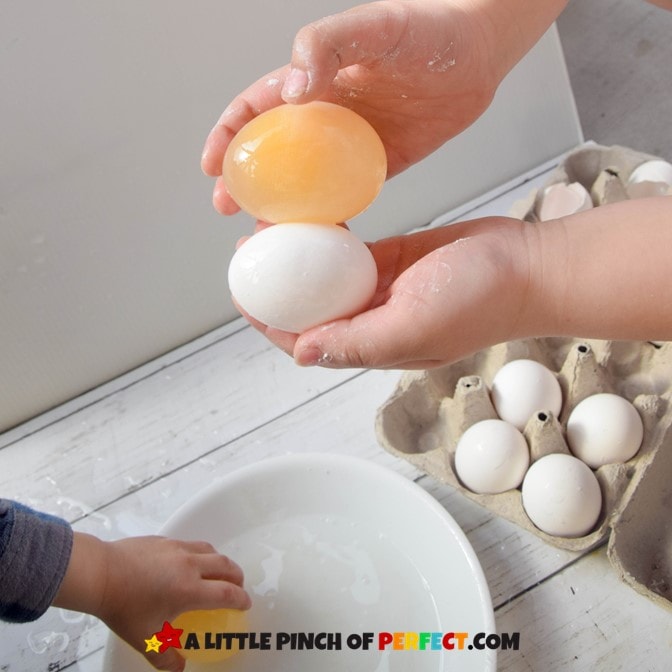
Can You Bounce an Egg?
- Now for the fun part. Try bouncing the vinegar egg to see if it will bounce. Carefully hold it 2-3 inches above the table and let go so it falls and bounces inside a bowl or on the table. If bounced too hard it will turn into messy play.
- Optional: When you are done bouncing the egg pop it inside a bowl and observe.
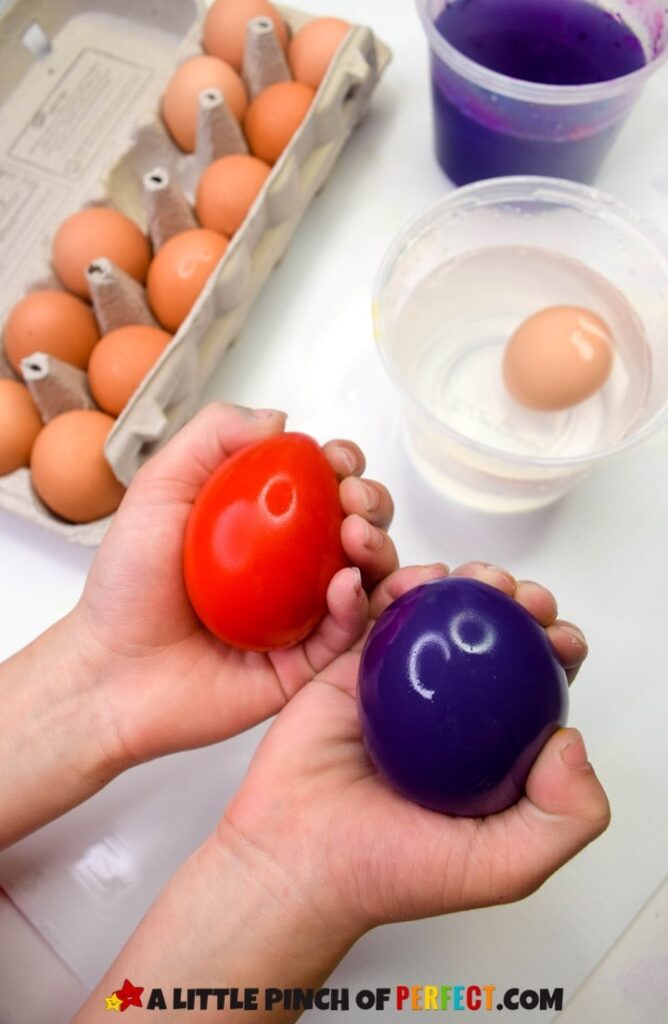
What Happens When You Put an Egg in Vinegar? Science Explained
The eggshells of chicken eggs are mostly made of calcium carbonate which is insoluble in water and soluble in vinegar. When the egg was covered with water in our control jar, the shell stayed intact.
When the egg was covered with vinegar, the calcium carbonate in the eggshell immediately started to dissolve. Through this chemical reaction, the vinegar was breaking down the calcium carbonate and releases carbon dioxide. We could see the carbon dioxide bubbles on the outside of the egg. Once the hard shell of the egg is removed, the flexible membrane of the egg stays intact, creating a bouncy egg.
The egg in the vinegar also gets larger because the vinegar is absorbed into the egg through the permeable membrane. When liquids travel through a membrane it is called osmosis.
Print the Bouncy Eggs Directions and Worksheets:
Don’t see the box? Click Here to be taken to the download.
Also Available on Etsy and Teachers Pay Teachers.
